Booth M81- AD Show March 18-21
Update: I will be participating in the 2011 AD Show in NYC
The Architectural digest home show begins this Thursday in NYC. You can find more information here. If you would like to pre register for free tickets you can find the necessary information on Nico Yektai’s Facbook Fan Page
Here are the pieces that I will be exhibiting in NYC.
Glass hall Table
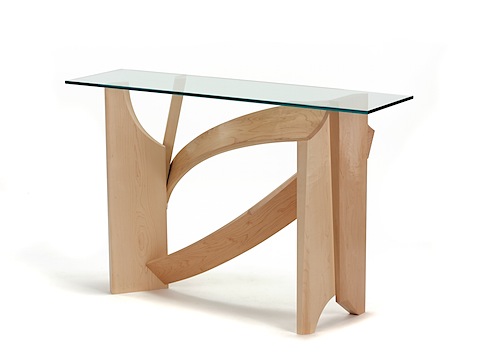
Pedestal Table #9
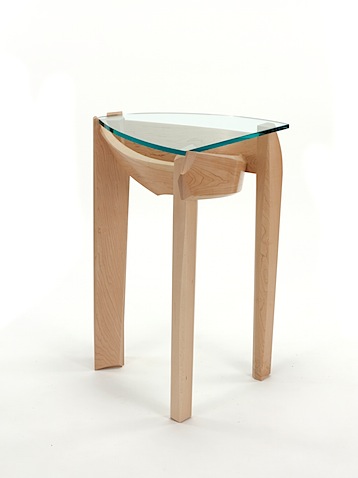
Dining Table #4
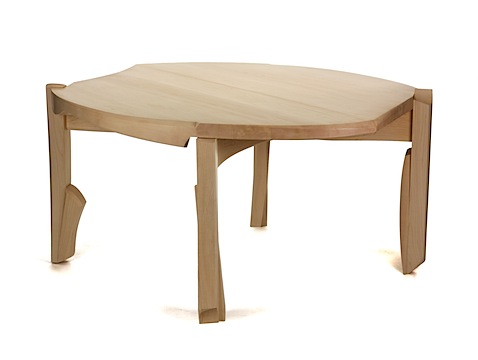
Chair #4

Mirror With Two Drawers

Corner Piece #3
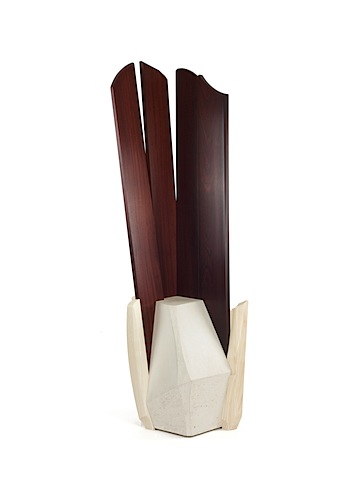
Bench #13
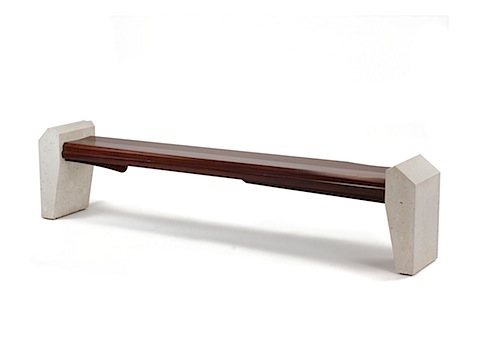
 By Nico Yektai -
By Nico Yektai -New York based designer/maker Nico Yektai opened the doors to his Hamptons studio in 1995 after completing the MFA program at the School For American Craft at the Rochester Institute of Technology. The rigorous technical training complimented his background in Art History, which he studied, at Hobart College in Geneva NY. Yektai has synthesized this background into a singular style that has gained him national attention. Visit nicoyektai.com for more information
ACC Baltimore 2010 – Last Day
Today is the last day of the ACC Craft Show in Baltimore MD. I wanted to post a few shots of my booth since some of the newest work has not yet made it on to the website. If anyone would like to continue any of the conversations that we started over the last week or see more images of the new work do not hesitate to come by today or contact me via email or mobile phone.
ma**@ni********.com
Mobile 631 793 2827
Next Show: Architectural Digest Home Show in NYC

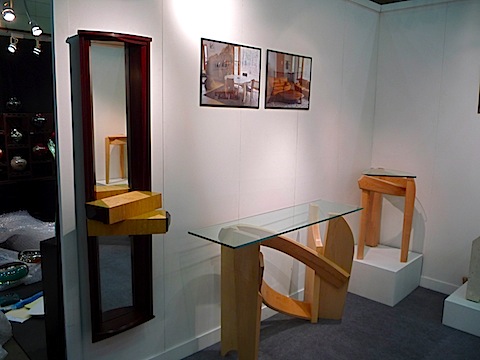

 By Nico Yektai -
By Nico Yektai -New York based designer/maker Nico Yektai opened the doors to his Hamptons studio in 1995 after completing the MFA program at the School For American Craft at the Rochester Institute of Technology. The rigorous technical training complimented his background in Art History, which he studied, at Hobart College in Geneva NY. Yektai has synthesized this background into a singular style that has gained him national attention. Visit nicoyektai.com for more information
Outdoor Furniture – Overview
I started making outdoor benches a few years ago in the hopes of making my work available to a broader range of people. I had heard “I cant fit that 10 foot bench in my home” one too many times. Needless to say I have a propensity to build large pieces of furniture and the boundaries of the home can often be a harsh reality. My solution was to turn to the great outdoors. With that decision I had to address a number of technical considerations so that I could put my work outside with confidence.
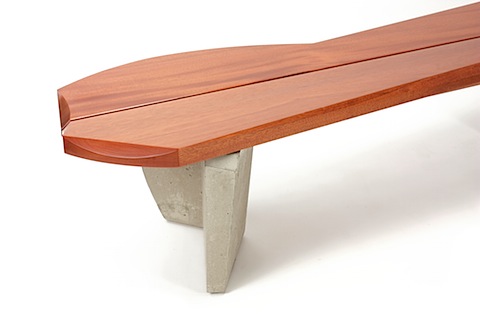
The first consideration is how will the bench contact the ground? Wood and dirt is not a great combination. Dirt offers a direct path for insects to attack and the dirt holds moisture like a sponge. Snow and wood contact is also a problem so the farther the wooden components are from the ground the better. My solution was to introduce cast concrete into my work. Cast concrete legs have some real advantages over wood legs in outdoor work. The main advantage is that it is far easier to make concrete last for years in a harsh outdoor environment. This advantage stems from the fact that properly cast concrete is dense and not very porous. The pathways that do exist can be sealed with any number of products that work amazingly well. The freeze thaw cycle and extremes of heat, rain and snow will have almost no effect of the castings years down the line. I do not feel that I have to make a case for the material since it is one of the most used products that man has ever come up with. The challenge for me was developing a vocabulary with the castings that fit with my work. I introduced complex shapes and added facets into the forms to allow each one the potential to be to be different. Another advantage to cast concrete as a material for outdoor furniture is its weight. The bench pictured below is at the Longhouse Reserve in East Hampton NY so it is well protected but at 600 pounds it is not going to walk away regardless of where it is installed.
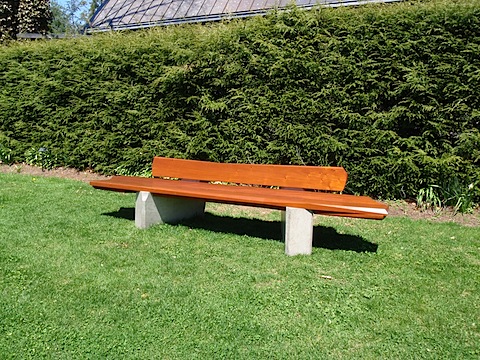
Now to discuss the wood components in my outdoor furniture. The discussion must begin with the actual choice of wood. There are a number of species that come to mind as suitable for outdoor furniture. They all have one thing in common. They have natural defenses that seal the fibers in their structure. Each species accomplishes this task differently but a brief overview of how White Oak does it may be helpful. White Oak and Red Oak have a similar structure. They are comprised of open fibers, think drinking straws. This means that water will get pulled into the wood via capillary action. Not great characteristics for an outdoor wood. White Oak has a trick- the open fibers are plugged with a growth called Tyloses. This anomaly allows White Oak to be water proof making it a suitable wood for outdoor furniture, wine barrels ect. There is one other consideration when choosing a wood- insects. I like to work with Mahogany, Sapele or Ipe because they all are excellent outdoor woods and have the bonus of naturally repelling insects.
Now for the tough part… the finish. Most outdoor furniture ends up the same color regardless of the species used. That color is gray. I have tested a number of different finishes over the years that offer the best protection and the longest maintenance cycle. Here is a shot of my torture test. The sample on the left has failed and the wood had gone gray. The sample on the right is the same age (this is its second winter) and the finish is still intact! There are other samples buried under the snow but they are not worth mentioning. The winning combination is a first coat of Sikkens Cetol 1 with two top coats of Last n Last Marine and Door varnish.
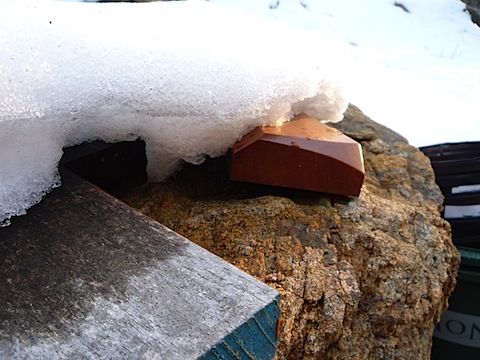
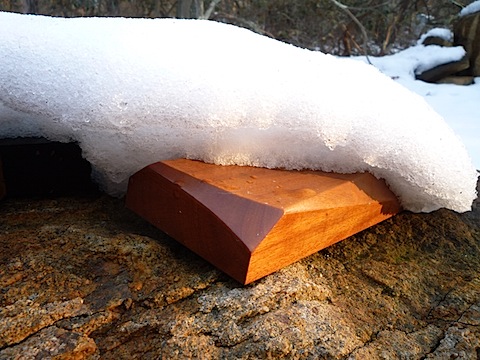
I suggest a touch up coat of the Last n Last each 1 to 2 years depending on the environment that the bench is in. The reapplication process is quite simple and will ensure that the wood remains in its full glory. I hope that this helps explain my approach to the challenging aspects of outdoor furniture. These pieces have added a new dimension to my work and opened up a number of new opportunities that would not have been available to me.
 By Nico Yektai -
By Nico Yektai -New York based designer/maker Nico Yektai opened the doors to his Hamptons studio in 1995 after completing the MFA program at the School For American Craft at the Rochester Institute of Technology. The rigorous technical training complimented his background in Art History, which he studied, at Hobart College in Geneva NY. Yektai has synthesized this background into a singular style that has gained him national attention. Visit nicoyektai.com for more information